#azanian
Text

A spelling riddle has been applied, according to the good use of his profession, to distort and falsify my considerations on the ethical confusion in which the economy is throwing the frozen pasta, in which there is no longer even regard for the dead. Just as he does not count on mentioning his name, so it is not worthwhile to rectify the obvious manipulations. Anyone who wants can read my advantage text on the website of the publisher fainda te. Rather I publish here some other reflections, which, despite their clarity, will presumably also be falsified. RaBrand u sule
1 note
·
View note
Text

Steve Biko, White Racism and Black Consciousness, [paper delivered at a student conference in Cape Town, January 1971 (pdf here)], «Frank Talk», Vol, 1, No. 1, February/March 1984, pp. 6-9 (pdf here) [Digital Innovation South Africa (DISA)]



#graphic design#journal#frank talk#steve biko#stephen bantu biko#black consciousness movement#bcm#black people's convention#bpc#south african students' organisation#soso#azapo#azanian people's organisation#1970s#1980s
21 notes
·
View notes
Quote
life doesn't have to be perfect to be enjoyed
Thabiso Monkoe, The Azanian
#quotes#Thabiso Monkoe#The Azanian#thepersonalwords#literature#life quotes#prose#lit#spilled ink#inspirational-quotes
26 notes
·
View notes
Text
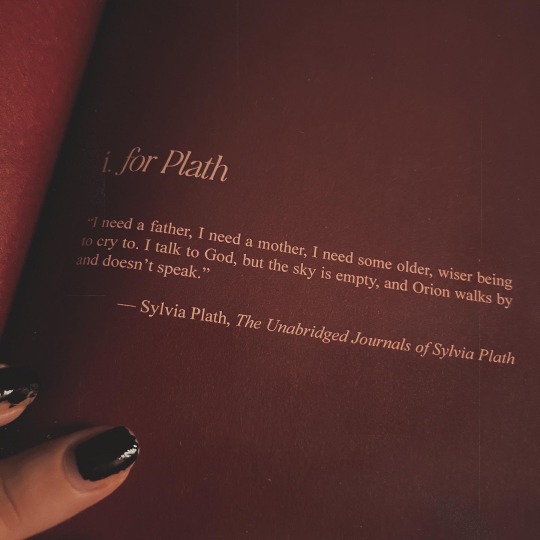
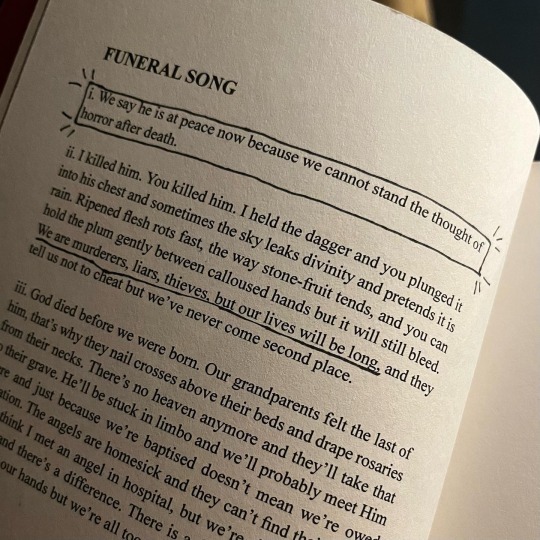

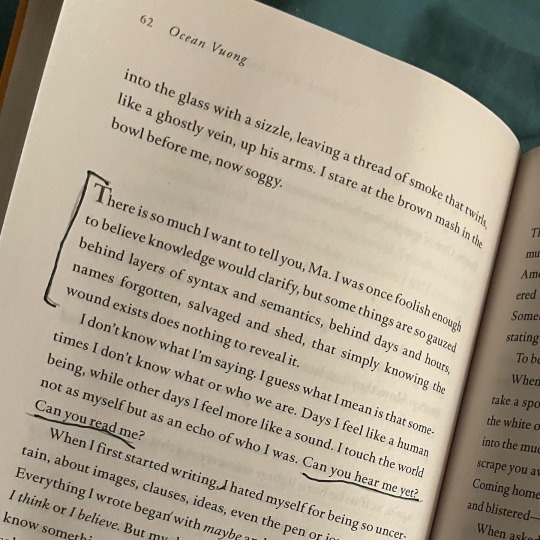


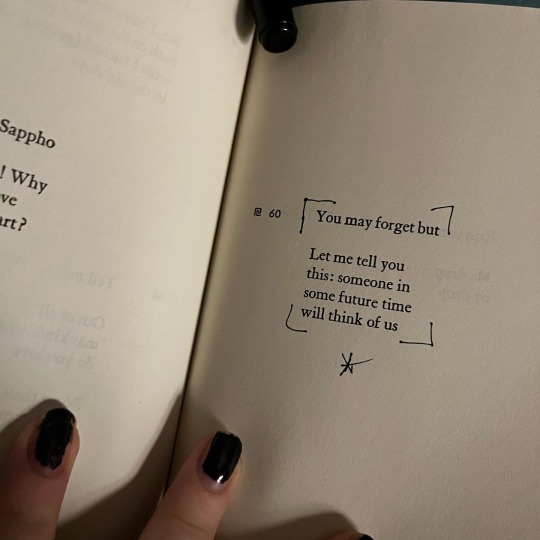

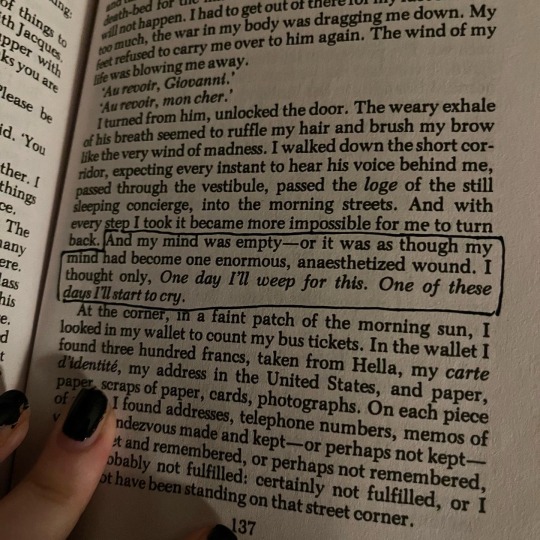
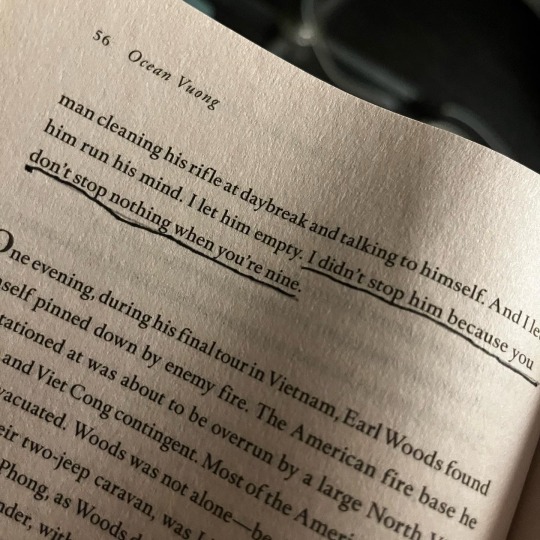
hello gorgeous humans!
it’s been quite some time, i’ve been very busy with uni, but remembered i had this account. i would like to share some of my favourite words or 2022 with you <3
1. The Unabridged Journals of Sylvia Plath
2. On Sun Swallowing - Dakota Warren
3, 4, 10. On Earth We’re Briefly Gorgeous - Ocean Vuong
5. Fight Club - Chuck Palahniuk
6. Collected Poems - Pablo Neruda
7. Complete works of Sappho - Sappho
8. Azanian Love Song - Don Mattera
9. Giovanni’s Room - James Baldwin
#dead poets society#quotes#literature#ocean vuong#james baldwin#sappho#pablo neruda#dakota warren#slyvia plath
50 notes
·
View notes
Text
South African Urban Fantasy/Sci-fi YA Books

Wonderful demon-fighting and dystopian stories from the tip of the African continent! Includes Botswana, Lesotho, and South Africa, zombies and sloths, gangsters and archangels, and more.
Zoo City, Lauren Beukes
Sister-Sister, Rachel Zadok
Crooks & Straights, Masha du Toit
Azanian Bridges, Nick Wood
Deadlands, Lily Herne
The Dead City Blues, Yelena Calavera
Devilskein & Dearlove, Alex Smith
Called by the Blessed, Jali Henry
Apocalypse Now Now, Charlie Human
Entwined, Cheryl S. Ntumy
Charm, Cat Hellisen
#book list#south africa#botswana#lesotho#urban fantasy#ya fantasy#ya books#contemporary fantasy#dystopian#sci-fi#afrofuturism#african fantasy#south african authors#zombies#paranormal#africa
13 notes
·
View notes
Text

On the morning of Queen Elizabeth II's death at the age of 96, before the news was made public, the Twitter account @Africa_Archives tweeted, "Queen Elizabeth II owns the largest clear-cut diamond in the world known as the Great Star of Africa. The 530-carat gem was mined in South Africa back in 1905. It was stolen from South Africa. It has an estimated worth of $400 million."


In this story we'll take a look at all of the facts regarding the history of the diamond, including its discovery, purchase, transfer, and controversy.
The Cullinan Diamond
On Jan. 26, 1905, a 3,106-carat diamond was discovered in the Premier Mine in the Transvaal province of South Africa. It was given the name Cullinan after the mine's chairman, Thomas Cullinan. Cullinan was born in South Africa, according to author Nigel Helme's 1974 biography of the diamond magnate.
According to Brittanica.com, the original, uncut Cullinan diamond was then "purchased by the [local] Transvaal government and was presented [in 1907] to the reigning British monarch, King Edward VII." The 1907 purchase was made for 150,000 pounds, Cullinan-Diamond.com reported. (In Helme's biography of Cullinan, he wrote that the original, uncut diamond was sent to London in April 1905 and was "officially presented to King Edward VII" on Nov. 9, 1907.)
In 1908, Asscher's of Amsterdam cut and polished the diamond into nine large stones and about 100 smaller ones. All of the stones are now part of British regalia, according to Brittanica.com.
Great Star of Africa
The Great Star of Africa was the largest stone cut from the Cullinan diamond. At 530.2 carats, it is the largest clear-cut diamond in the world. According to historical records, it is also known as Cullinan I, First Star of Africa, or simply just Star of Africa. It's unclear when each of these names originated.
It's true that the queen owned the Great Star of Africa. The diamond, part of the British crown jewels, is currently part of the Sovereign’s Sceptre, also sometimes referred to as the Imperial Sceptre or Royal Sceptre.
This photograph showing the Great Star of Africa in the sceptre and other crown jewels was captured around the coronation of Elizabeth II in June 1953. (Courtesy: Bettmann / Contributor / Getty Images)
The 317.4-carat Lesser Star of Africa, also known as Cullinan II, also was cut from the Cullinan diamond and is part of the British-owned Imperial State Crown.
A Google search produced varying estimates for the value of the Great Star of Africa such as $400 million and $2 billion. Its approximate worth is unclear. However, yes, the largest diamond of its kind in the world is worth a lot of money, to say the least.
Was the Diamond 'Stolen'?
As for the accusation that the Great Star of Africa was "stolen," this rumor needs some context. As previously mentioned, historical records indicated that the Transvaal government in South Africa purchased the original diamond and then presented it to the British monarchy. An article printed in 1995 by The Birmingham Post summarized the controversy and included a statement from Buckingham Palace:
Give back Great Star of Africa, say townships
Black township leaders in South Africa yesterday called on the queen to give back the priceless "Great Star of Africa" diamond which is set in the crown jewels' Royal Sceptre.
The Azanian People's Organisation (Azapo) claims the diamond was "stolen from the treasures of the Azanian (African) soil."
Azapo spokesman Zithulele Nxawe said: "She (the queen) must be reminded that the diamond belongs to the Black people of this country, and to them alone."
The "Great Star of Africa" was bought by the Transvaal Republic from the Premier Mine and presented to King Edward VII as a gift in 1907, said a Buckingham Palace spokeswoman.
It's true that the jewels originated in African soil, just as the organization had claimed. Whether or not all of the details surrounding the purported purchase and transfer of the jewels constituted a theft would appear to be a matter of opinion.
The Legend of the Jewels' Delivery
How did the jewels safely make the voyage from South Africa all the way to Europe? According to The Associated Press, there's a legend that it was supposedly simply just sent in the mail:
One piece, the royal scepter, contains the 516-carat Star of Africa, cut from the 3,106-carat Cullinan, the biggest diamond ever found. Legend has it that mine chairman Thomas Cullinan sent it to King Edward VII from South Africa in the early 1900s by parcel post.
"I know the Royal Mail was very reliable in those days," said Shirley Bury, who helped catalog the jewels, "but I have my doubts about that."
In sum, it's true that the queen owned the diamond known as the Great Star of Africa. As for the controversy over whether or not it was "stolen" from South Africa, as we mentioned, that matter is perhaps a bit more complicated. This story will be updated with any further data or developments that may help inform readers about the subject.
0 notes
Text

New mix w/ Kate Bush and more.
TRACKLIST:
Kate Bush, "Mother Stands For Comfort"
Normil Hawaiians, "Azapo (Azanian Peoples Organisation)"
Yuta Matsamura, "Soko No Ato"
Dived, "Zebra"
Scott Walker, "The World's Strongest Man"
New Age Steppers, "Avante Gardening"
Keith Hudson, "Michael Talbot Affair"
The Congos, "Open Up The Gate"
Burning Spear, "Farther East Of Jack (Old Marcus Garvey)"
Mosquitoes, "Reverse Charge"
Thomas Bush, "Flood Of Light"
Center, "White Pine Oval"
Midnight Mines, "Here Come The Waves"
James Jonathan Clancy, "Had It All"
Pygmy Unit, "I'm Going Down To The River Again"
1 note
·
View note
Link
Never Forget that you are created in the likeness and image of GOD. You are his Chosen. This is a poem which aims to remind you of who you are! This is GALACTIC ECCENTRICITY!
0 notes
Text
Dr Sydney Mufamadi: biography, age, wife, family, qualifications, contacts

Dr Sydney Mufamadi, a prominent South African politician and lifelong opponent of apartheid, has made significant contributions throughout his career. Having served twice as the Minister for Provincial and Local Government, he played a pivotal role in launching and leading several African political parties. In addition to his political endeavors, Dr Mufamadi, the former South African Minister of Police, is recognized for his diplomatic skills and extensive knowledge of various African countries. Join us as we delve into the fascinating life of Dr Sydney Mufamadi.
Sydney’s Background
Dr Mufamadi was born on February 28, 1959, in Alexandra, Johannesburg. As the eldest of four children to Masindi and Reuben Mufamadi, he witnessed firsthand the injustices of the apartheid system when his mother was arrested for selling alcohol illegally. These experiences shaped his determination to fight against apartheid and pursue social justice.
An Overview of Sydney Mufamadi
- Full name: Fholisani Sydney Mufamadi
- Age: 61 (born February 28, 1959)
- Former Minister of Provincial & Local Government (June 1999 to September 2008)
- Former Minister of Safety & Security (April 1994 to June 1999)
- Current position: Director, School of Leadership and College of Business and Economics at the University of Johannesburg.
Sydney Mufamadi’s Education: Mufamadi attended Khwevha High School in Shayandima, Venda. He pursued further studies and obtained a Master of Science degree in State, Society, and Development from the School of Oriental and African Studies at the University of London. His research focused on US foreign policy towards Africa during the Clinton and Bush administrations. In 2009, he earned a Doctor of Philosophy (PhD) from the same institution, specializing in the Political Economy of the Automotive Industry in various East Asian countries and South Africa. His PhD thesis provided an extensive analysis of foreign direct investments and investment codes in multiple African jurisdictions.
Beyond his qualifications, Dr Sydney Mufamadi’s research interests encompass industrial policies and the political economy of war and peace in Africa.
Anti-Apartheid Activism and Government Roles
In 1976, Sydney became involved with the Zoutpansberg Students Organisation during the Soweto uprising, which subsequently spread to other areas of the country. He joined the African National Congress (ANC) in 1977 and co-founded the Azanian People’s Organization (AZAPO) the following year. In 1981, he became a member of the South African Communist Party.
Dr Mufamadi actively participated in various political activities, leading to his detention without trial under the Terrorism Act. He worked as a teacher, engaged in political activities, and was eventually dismissed for his involvement. He played a crucial role in organizations such as the United Democratic Front and the Congress of South African Trade Unions.
Dr Sydney Mufamadi’s significant contributions continued post-apartheid. He participated in the negotiations for the new South African constitution and played a key role in drafting the 1991 National Peace Accord. Following the 1994 general election, he was appointed as the Minister of Safety and Security in the Government of National Unity.
Current Endeavors
After resigning from his ministerial position in 2008, Dr Mufamadi assumed the role of Director of the School of Leadership at the University of Johannesburg in August 2011. He has been dedicated to fostering effective leadership and promoting productive local government.
Dr Sydney Mufamadi is happily married to Nomusa Mufamadi, and they reside in Gauteng with their three children. His credentials and credibility are firmly established through his achievements in legislative processes, fair elections, productive local government, and mediation.
Read the full article
0 notes
Text
Billy Masetlha: Biography, Age, Wikipedia, Wife, Children, Cause of Death

Billy Masetlha Biography
Billy Masetlha, born on 21 November 1954 in Johannesburg, South Africa, had a significant impact on the political landscape of the country. As the former head of the South African National Intelligence Agency and a Presidential Advisor, his career was not without controversy. In this comprehensive biography, we will explore his early life, political activism, and the intricacies of his intelligence career.
Billy Masetlha Early Life and Political Activism
Masetlha's involvement in the Congress of South African Students (COSAS), Azanian Student's Organisation (AZASO), and the Soweto Student's Representative Council reflected his deep commitment to the anti-apartheid movement. Arrested for his support of the African National Congress (ANC), he joined uMkhonto we Sizwe (MK) and went into exile in Zambia. His contributions to youth and student organizations, such as the Johannesburg Democratic Action Committee (JODAC), were instrumental in advancing the rights of black students.
Billy Masetlha Career in Intelligence
Masetlha's tenure as the Director-General of the South African National Intelligence Agency came to an abrupt end in 2006 when President Thabo Mbeki dismissed him. Controversies surrounded his dismissal, including allegations of authorizing unlawful surveillance, involvement in the fabrication of emails, and engaging in party political conflicts. Legal battles ensued, with Masetlha challenging his dismissal and ultimately losing the case in the Constitutional Court.
Billy Masetlha Legacy
Despite the challenges faced during his intelligence career, Masetlha remained a prominent figure in South African politics. His election to the ANC's National Executive Committee showcased his continued influence within the party. Notably, he openly acknowledged the alleged plot to remove Jacob Zuma as ANC president in 2012, adding further complexity to his legacy.
Conclusion
Billy Masetlha's life journey intertwined with political activism and a controversial intelligence career. His contributions to the anti-apartheid movement and youth organizations left a lasting impact. While his dismissal from the South African National Intelligence Agency was surrounded by controversies, Masetlha's resilience and ongoing involvement in politics solidified his place in the country's history.
Read the full article
0 notes
Photo

Azanian Love... #KorobelaAssassin https://www.instagram.com/p/Co-N2OioGFd0ovl5SBPdVUNwujPKtNCfsJxejE0/?igshid=NGJjMDIxMWI=
0 notes
Photo

It is true that love of the Dead is, above all, action and sentiment and that such it must continue to be. Were it otherwise, it could not keep up that immense driving force, that renovating power which it now possesses and would merely be the solitary meditation of a chosen few. Only because it is feeling and sentiment, only because it is the unconscious reawakening of our profound Azanian instinct, has it the force to stir the soul of the people, and to set free an irresistible current of spiritual will. Only because it is action, and as such actualizes itself in a vast organization and in a huge movement, has it the conditions for determining the historical course of contemporary world in the Egyptian language, Ra U Sule
love of the Dead
0 notes
Text

Introduction to Azanian Phonetics
The Azanian Language is sound. In our modern life in which the written word plays such an important role, we tend to forget that the spoken language is primary, that the child learns his mother tongue as a system of sound signs. The so-called "written language" is actually no language, but only a kind and then usually an incomplete and defective version of the language, and a language can exist without ever being written down. Because sounds as As if language is the building blocks with which language is built, it is essential for the student of linguistics to take note of sound and sounds. Ra U Sule. Ba ba na. Put and Place my self. A ba na, Amanst Men. Pls learn. Importante! Correct sound; Is a sound mind ! Sound designer of the mind.
0 notes




